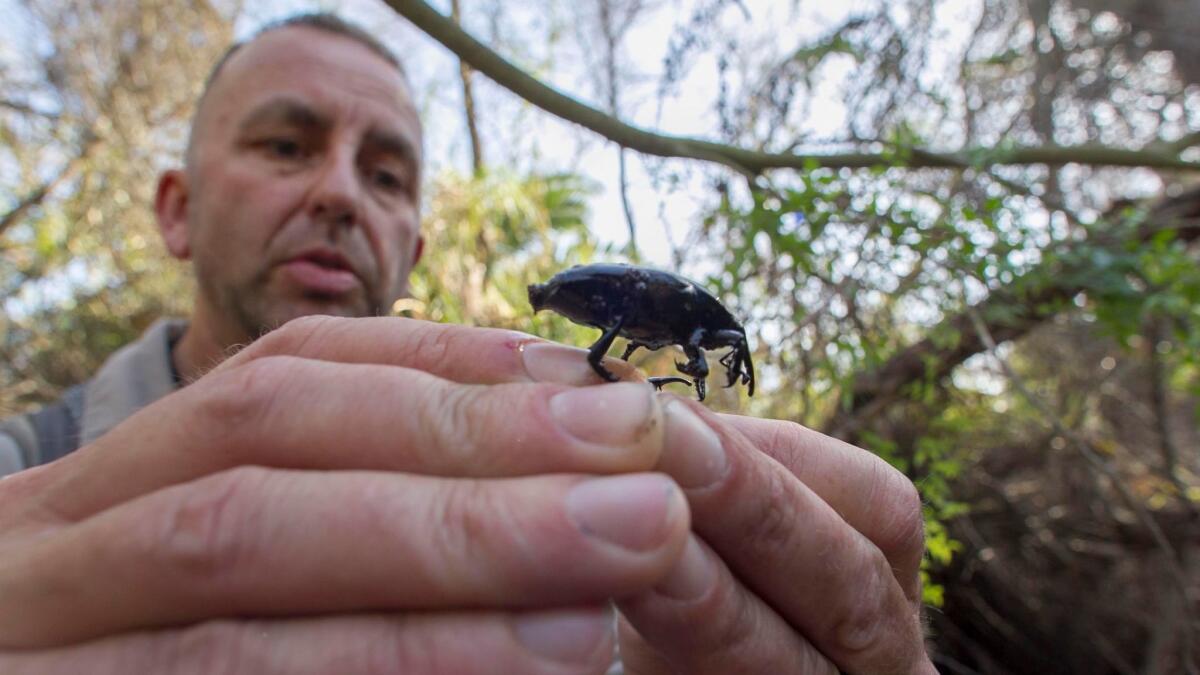Invasive weevil spreads north, endangering California’s palms

- Share via
Reporting from San Diego — An invasive beetle that crossed from Mexico into southern San Diego County more than five years ago is continuing to head north, threatening widespread destruction of ornamental palm trees and date palms that could add up to millions of dollars in damage.
“It has already killed hundreds of Canary Island date palms in Tijuana and parts of San Diego County,” Mark Hoddle, director of the center for invasive species research at UC Riverside, said in a statement. “We are on the verge of a major crisis for California’s palms.”
The South American Palm Weevil can now be found as far north as Bonita and along the border with Mexico as far east as Texas, according to San Diego County officials. The financial harm this flying pest inflicts would rise significantly if it reaches date farms in the Imperial and Coachella valleys, Hoddle said.
The weevil can wreak havoc on date palms, Canary Island date palms, coconut palms, African oil palms, sago palms and Washingtonia fan palms.
It was first identified by San Diego County and state agriculture officials around 2011 in San Ysidro. Entomologists made the discovery while looking for the closely related red palm weevil, which popped up in Laguna Beach and was eradicated.
Unlike the red palm weevil — which was suspected to have been intentionally brought to the United States from Southeast Asia as a food item — the South American palm weevil may be harder to stop because of its sourcing origin in neighboring Mexico.
“We’re tracking the spread,” said Travis Elder, deputy agriculture commissioner with the county’s department of Agriculture, Weights and Measures. “It is spreading naturally. They have a tremendous ability to fly to find new hosts.”
The jet-black insects, which have an extended snout, can grow up to 2 inches long. They lay their eggs on the top of their targeted trees and then the larvae burrow into the plants.
A single infected tree can have up to 1,000 weevils.
Infected palms can be hard to spot because the larvae live inside their host trees; residents should look for dead and drooping fronds, as well as damage to the palm’s crown, officials said. Removal of infected trees is necessary not only to quarantine the weevils, but also to prevent the top of the tree from collapsing and causing injuries.
Smith writes for the San Diego Union-Tribune.
ALSO
Cross-border shuttle endures rock-throwing attacks
The trees that make Southern California shady and green are dying. Fast
Insects and disease are ravaging the Southland’s urban trees. Who’s going to stop them?
More to Read
Sign up for Essential California
The most important California stories and recommendations in your inbox every morning.
You may occasionally receive promotional content from the Los Angeles Times.











